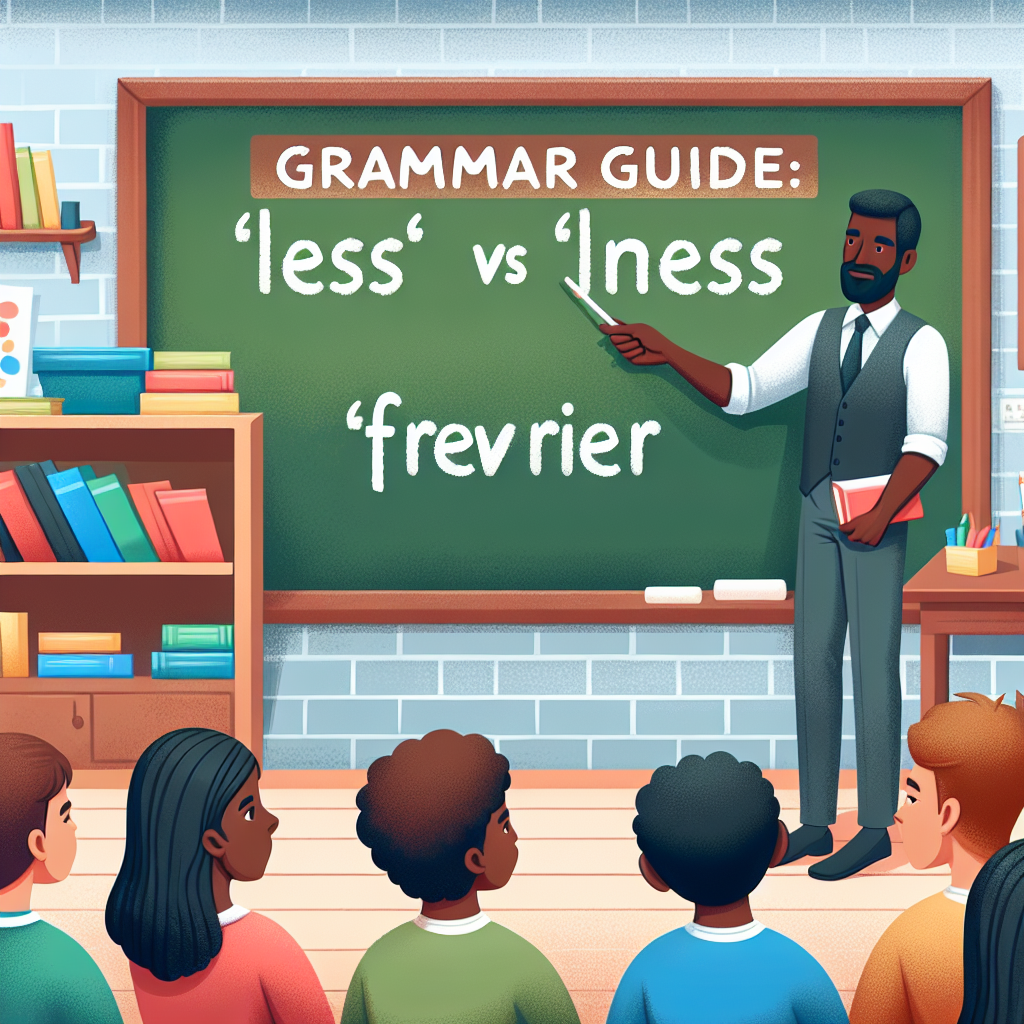Grammar Guide: ‘less’ compared to ‘fewer’
Introduction
Have you ever been perplexed by the difference between using ‘less’ and ‘fewer’ in a sentence? You’re not alone. Understanding when to use these two words can be quite confusing, but fear not, we are here to help clarify the difference.
When to Use ‘Less’
‘Less’ is used when referring to an uncountable or mass noun. This means nouns that cannot be counted individually. For example, “I have less water than you” or “She has less money than him.”
When to Use ‘Fewer’
‘Fewer’ is used when referring to countable nouns, meaning items that can be counted individually. For example, “There are fewer apples on the tree” or “He has fewer pencils than her.”
Common Mistakes
One common mistake people make is using ‘less’ when they should be using ‘fewer.’ This often happens in supermarkets, where signs may say “10 items or less” when it should actually be “10 items or fewer.”
Examples
– “I have less time to complete the task.”
– “There are fewer people at the party today.”
Practice
To improve your understanding of when to use ‘less’ and ‘fewer,’ practice by writing your own sentences using each word correctly. Visit Edit Mojo for more grammar tips and tricks.
Conclusion
In conclusion, understanding the difference between ‘less’ and ‘fewer’ is key to using proper grammar in your writing. By remembering the basic rule of countable versus uncountable nouns, you can easily determine which word to use in a sentence. Practice makes perfect, so keep practicing and soon you’ll be a master of these tricky words.
#Grammar #guide #ʼlessʼ #compared #ʼfewerʼ
